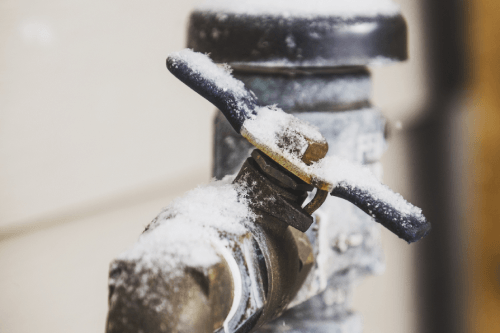Ways to Protect Pipes from Freezing Damage: Important Guidance
Ways to Protect Pipes from Freezing Damage: Important Guidance
Blog Article
This post down the page relating to How To Avoid Freezing Pipes is rather fascinating. Give it a go and draw your own personal results.

Cold weather can damage your pipes, especially by freezing pipelines. Here's just how to prevent it from occurring and what to do if it does.
Intro
As temperatures drop, the threat of frozen pipes rises, potentially leading to expensive repair work and water damages. Recognizing how to prevent icy pipes is critical for house owners in chilly environments.
Recognizing Icy Pipelines
What creates pipes to ice up?
Pipelines freeze when exposed to temperature levels below 32 ° F (0 ° C) for expanded durations. As water inside the pipes freezes, it expands, taxing the pipe walls and potentially triggering them to break.
Risks and damages
Icy pipes can result in water system disruptions, residential property damage, and costly repairs. Burst pipelines can flood homes and create extensive structural damages.
Indications of Frozen Piping
Determining icy pipes early can avoid them from breaking.
How to identify frozen pipelines
Look for lowered water flow from taps, unusual smells or noises from pipes, and noticeable frost on exposed pipelines.
Prevention Tips
Shielding at risk pipelines
Wrap pipelines in insulation sleeves or utilize warm tape to protect them from freezing temperatures. Concentrate on pipelines in unheated or outside areas of the home.
Heating methods
Keep interior rooms effectively heated, particularly areas with plumbing. Open up cupboard doors to allow cozy air to flow around pipelines under sinks.
Shielding Outside Plumbing
Yard tubes and outside taps
Disconnect and drain yard pipes before winter. Mount frost-proof faucets or cover outdoor taps with protected caps.
What to Do If Your Pipes Freeze
Immediate activities to take
If you think icy pipes, maintain faucets open up to eliminate stress as the ice melts. Make use of a hairdryer or towels taken in hot water to thaw pipes gradually.
Long-Term Solutions
Architectural changes
Think about rerouting pipelines far from exterior wall surfaces or unheated areas. Add additional insulation to attics, cellars, and crawl spaces.
Updating insulation
Purchase high-quality insulation for pipes, attics, and walls. Appropriate insulation aids preserve regular temperatures and reduces the threat of icy pipes.
Conclusion
Avoiding frozen pipes requires proactive steps and quick reactions. By recognizing the causes, indications, and safety nets, property owners can shield their pipes during cold weather.
6 Proven Ways to Prevent Frozen Pipes and Protect Your Home
Disconnect and Drain Garden Hoses
Before winter arrives, start by disconnecting your garden hoses and draining any remaining water. Close the shut-off valves that supply outdoor hose bibs and leave the outdoor faucet open to allow any residual water to drain. For extra protection, consider using faucet covers throughout the colder months. It’s also important to drain water from any sprinkler supply lines following the manufacturer’s directions.
Insulate Exposed Pipes
Insulating your pipes is an effective way to prevent freezing. Pipe insulation is readily available at home improvement stores and is relatively inexpensive. Pay close attention to pipes in unheated areas such as the attic, basement, crawl spaces, or garage. Apply foam insulation generously to create a buffer against the cold. You can also wrap your pipes in heat tape or thermostat-controlled heat cables for added warmth.
Seal Air Leaks
Inspect your home for any cracks or openings that could let in cold air. Seal any holes around the piping in interior or exterior walls, as well as the sill plates where your home rests on its foundation. Additionally, make sure to keep your garage door closed unless you’re entering or exiting. Leaving it open creates a significant air leak that can lead to frozen pipes.
Allow Warm Air Circulation
During cold snaps, it’s essential to allow warm air to circulate evenly throughout your home. Leave interior doors ajar to promote better airflow. Open kitchen and bathroom cabinets to help distribute heat consistently around the rooms. If you have small children or pets, be sure to remove any household chemicals or potentially harmful cleaners from open cabinets for safety.
Let Faucets Drip
A small trickle of water can make a big difference in preventing ice formation inside your pipes. When temperatures drop significantly, start a drip of water from all faucets served by exposed pipes. This continuous flow helps prevent the water from freezing. Additionally, running a few faucets slightly can relieve pressure inside the pipes, reducing the chances of a rupture if the water inside does freeze.
https://choateshvac.com/6-proven-ways-to-prevent-frozen-pipes-and-protect-your-home/

As a keen person who reads on Prevent Frozen Pipes , I figured sharing that article post was a good thing. Be sure to pause to promote this post if you liked it. Thanks so much for going through it.
About This Report this page